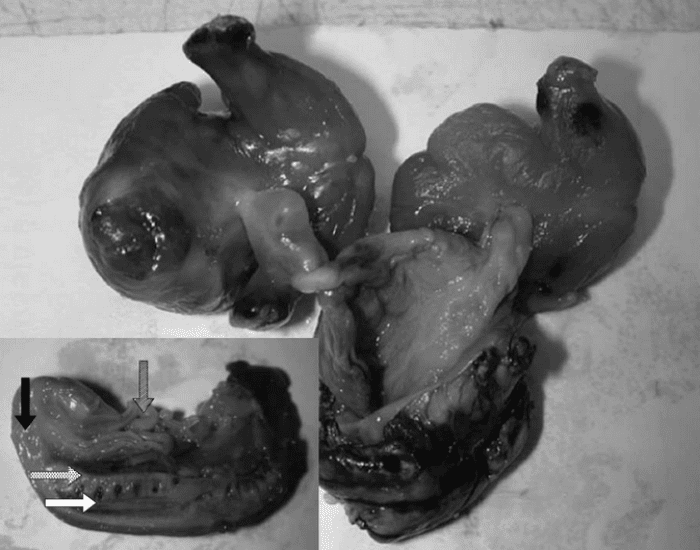A recent report in the Hong Kong Medical Journal describes the case of a baby girl who was born carrying two masses in her body which are likely to be foetuses. But this doesn’t mean that she was “born pregnant” (as some media wrote), but is rather the case of “parasitic twins”.
If they are indeed foetuses, then this is a case of foetus in foetu – which literally means “foetus inside a foetus”. It’s a very rare condition which seems to occur 1 time for every 500,000 births, though it’s not clear exactly why this happens. Researchers suspect that the tissue mass begins as a regular foetus, but is accidentally enveloped inside its twin.
Unlike conjoined twins, one ceases development during gestation and is vestigial to a mostly fully formed, otherwise healthy individual twin. The undeveloped twin is defined as parasitic, rather than conjoined
The other theory for the girl is that the two masses are highly developed teratoma, which is a type of tumour that consists of more than one type of cell, causing all sorts of unwanted tissue and organ components to grow inside her (hair, bone, teeth etc).
“Each structure included a spine, intestines, bones with bone marrow, ‘primitive’ brain matter, a rib cage and an umbilical cord, according to the study. The study authors said the partially formed foetuses and the baby girl shared the same DNA, fitting a popular theory that the woman was initially pregnant with identical triplets, but researchers aren’t sure this is what happened.
Judging by the body parts they found in the baby girl, the doctors determined that the absorbed twins could have been up to 10 weeks old before their growth stopped and they were absorbed. But the mechanism for this ‘absorption’ is not fully understood, the study authors wrote, so it’s also possible the extra foetuses were absorbed earlier and grew with the baby girl in the womb.”
The mass was removed without any complications, and may provide researchers with valuable information regarding this condition.
“I think we see these on occasion and they’re bizarre,” Jane Corteville, an OB/GYN at University Hospitals Case Medical Centre in Cleveland, Ohio, and an expert on the phenomenon, told ABC News. “And I think they do give us kind of some insight maybe – but not very much – into what happens during early development.”



